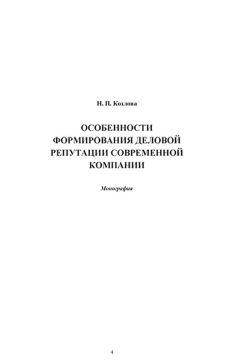Ознакомительная версия.
Two Kinds of Risk
MPT states that the risk for individual stock returns has two components:
Systematic Risk – These are market risks that cannot be diversified away. Interest rates, recessions and wars are examples of systematic risks.
Unsystematic Risk – Also known as «specific risk», this risk is specific to individual stocks and can be diversified away as you increase the number of stocks in your portfolio (see Figure 1). It represents the component of a stock’s return that is not correlated with general market moves.
For a well-diversified portfolio, the risk of each stock contributes little to portfolio risk. Instead, it is the difference – or covariance – between individual stocks’ levels of risk that determines overall portfolio risk. As a result, investors benefit from holding diversified portfolios instead of individual stocks.
Now that we understand the benefits of diversification, the question of how to identify the best level of diversification arises. Enters the efficient frontier.
For every level of return, there is one portfolio that offers the lowest possible risk, and for every level of risk, there is a portfolio that offers the highest return. These combinations can be plotted on a graph, and the resulting line is the efficient frontier. Figure 2 shows the efficient frontier for two stocks – a high risk/high return technology stock (Google) and a low risk/low return consumer products stock (Coca Cola).
Any portfolio that lies on the upper part of the curve is efficient: it gives the maximum expected return for a given level of risk. A rational investor will hold a portfolio that lies somewhere on the efficient frontier. The maximum level of risk that the investor will take on determines the position of the portfolio on the line.
MPT takes this idea even further. It suggests that combining a stock portfolio that sits on the efficient frontier with a risk-free asset, the purchase of which is funded by borrowing, can actually increase returns beyond the efficient frontier. Thus, if you were to borrow to acquire a risk-free stock, then the remaining stock portfolio could have a riskier profile and, therefore, a higher return than you might otherwise choose.
MPT has had a marked impact on how investors perceive risk, return and portfolio management. The theory demonstrates that portfolio diversification can reduce investment risk. Modern money managers routinely follow its precepts.
However, MPT has some shortcomings in the real world. It often requires investors to rethink notions of risk. Sometimes it demands that the investor take on a perceived risky investment (futures, for example) in order to reduce overall risk. That can be a tough sell to an investor not familiar with the benefits of sophisticated portfolio management techniques. Furthermore, MPT assumes that it is possible to select stocks whose individual performance is independent of other investments in the portfolio. But market historians have shown that there are no such instruments; in times of market stress, seemingly independent investments do, in fact, act as though they are related.
Likewise, it is logical to borrow to hold a risk-free asset and increase your portfolio returns, but finding a truly risk-free asset is another matter. Government-backed bonds are presumed to be risk free, but, in reality, they are not. Securities such as gilts and U.S. Treasury bonds are free of default risk, but expectations of higher inflation and interest rate changes can both affect their value.
Then there is the question of the number of stocks required for diversification. How many is enough? Investment guru William J. Bernstein says that even 100 stocks is not enough to diversify away unsystematic risk. By contrast, Edwin J. Elton and Martin J. Gruber, in their book «MPT and Investment Analysis», conclude that you would come very close to achieving optimal diversity after adding the twentieth stock.
The gist of MPT is that the market is hard to beat and that the people who beat the market are those who take above-average risk. It is also implied that these risk takers will get their comeuppance when markets turn down.
Then again, investors such as Warren Buffett remind us that portfolio theory is just that – theory. At the end of the day, a portfolio’s success rests on the investor’s skills and the time he or she devotes to it.
Source: March 14, 2006; By Ben McClure, investopedia
Warren Buffett: How He Does It
Did you know that a $10,000 investment in Berkshire Hathaway in 1965, the year Warren Buffett took control of it, would grow to be worth nearly $30 million by 2005? By comparison, $10,000 in the S&P 500 would have grown to only about $500,000. Whether you like him or not, Buffett’s investment strategy is arguably the most successful ever. With a sustained compound return this high for this long, it’s no wonder Buffett’s legend has swelled to mythical proportions. But how did he do it?
Warren Buffett descends from the Benjamin Graham school of value investing. Value investors look for securities with prices that are unjustifiably low based on their intrinsic worth. Determining intrinsic value can be a bit tricky as there is no universally accepted way to obtain this figure. Most often intrinsic worth is estimated by analyzing a company’s fundamentals. Like bargain hunters, value investors seek products that are beneficial and of high quality but underpriced.
Warren Buffett takes this value investing approach to another level. Many value investors aren’t supporters of the efficient market hypothesis, but they do trust that the market will eventually start to favor those quality stocks that were undervalued. Buffett doesn’t think in these terms. He isn’t concerned with the activities of the stock market.
He chooses stocks solely on the basis of their overall potential as a company. Holding these stocks as a long-term play, Buffett seeks not capital gain but ownership in quality companies extremely capable of generating earnings. When Buffett invests in a company, he isn’t concerned with whether the market will eventually recognize its worth; he is concerned with how well that company can make money as a business.
Buffett finds low-priced value by asking himself some questions when he evaluates the relationship between a stock’s level of excellence and its price.
1. Has the company consistently performed well?
Sometimes return on equity is referred to as «stockholder’s return on investment». It reveals the rate at which shareholders are earning income on their shares. Buffett always looks at ROE to see whether or not a company has consistently performed well in comparison to other companies in the same industry.
Looking at the ROE in just the last year isn’t enough. The investor should view the ROE from the past five to 10 years to get a good idea of historical performance.
2. Has the company avoided excess debt?
Gearing is another key characteristic Buffett considers carefully. Buffett prefers to see a small amount of debt so that earnings growth is being generated from shareholders’ equity as opposed to borrowed money. Debt to equity ratio shows the proportion of equity and debt the company is using to finance its assets, and the higher the ratio, the more debt is financing the company. A high level of debt compared to equity can result in volatile earnings and large interest expenses.
3. Are profit margins high? Are they increasing?
The profitability of a company depends not only on having a good profit margin but also on consistently increasing this profit margin. This margin is calculated by dividing net income by net sales. To get a good indication of historical profit margins, investors should look back at least five years. A high profit margin indicates the company is executing its business well, but increasing margins means management has been extremely efficient and successful at controlling expenses.
4. How long has the company been public?
Buffett typically considers only companies that have been around for at least 10 years. As a result, most of the technology companies that have had their IPOs in the past decade wouldn’t get on Buffett’s radar (not to mention the fact that Buffett will invest only in a business that he fully understands, and he admittedly does not understand what a lot of today’s technology companies actually do). It makes sense that one of Buffet’s criteria is longevity: value investing means looking at companies that have stood the test of time but are currently undervalued.
Never underestimate the value of historical performance, which demonstrates the company’s ability (or inability) to increase shareholder value. Do keep in mind that the past performance of a stock does not guarantee future performance – the job of the value investor is to determine how well the company can perform, as well as it did in the past. Determining this is tricky, but evidently Buffett is very good at it.
5. Do the company’s products rely on a commodity?
Initially you might think of this question as a radical approach to narrowing down a company. Buffett, however, sees this question as an important one. He tends to shy away from companies whose products are indistinguishable from those of competitors, and those that rely solely on a commodity such as oil and gas. If the company does not offer anything different than another firm within the same industry, Buffett sees little that sets the company apart. Any characteristic that is hard to replicate is what Buffett calls a company’s economic moat, or competitive advantage. The wider the moat, the tougher it is for a competitor to gain market share.
6. Is the stock selling at a 25% discount to its real value?
This is the kicker. Finding companies that meet the other five criteria is one thing, but determining whether they are undervalued is the most difficult part of value investing, and Buffett’s most important skill. To check this, an investor must determine the intrinsic value of a company by analyzing a number of business fundamentals, including earnings, revenues and assets. And a company’s intrinsic value is usually higher than its liquidation value.
Once Buffett determines the intrinsic value of the company, he compares it to its current market cap. If his measurement of intrinsic value is at least 25% higher than the company’s market cap, Buffett sees the company as one that has value. Sounds easy, doesn’t it? Well, Buffett’s success depends on his unmatched skill in accurately determining this intrinsic value. While we can outline some of his criteria, we have no way of knowing exactly how he gained such precise mastery of calculating value
Buffett’s investing style, like the shopping style of a bargain hunter, reflects a practical, down-to-earth attitude. Buffett maintains this attitude in other areas of his life: he doesn’t live in a huge house, he doesn’t collect cars and he doesn’t take a limousine to work. The value-investing style is not without its critics, but whether you support Buffett or not, the proof is in the pudding. As of 2004, he holds the title of the second-richest man in the world, with a net worth of more $40 billion (Forbes 2004).
Source: April 22, 2005; investopedia
1. modern portfolio theory (MPT) – современная теория портфеля
2. standard deviation – стандартное отклонение
3. mean n – среднее значение, середина
4. inherent a – внутренний, внутренне присущий
5. picking winners – выбор победителей (выбор компаний с большим потенциалом развития как объекта капиталовложений)
6. nest eggs – деньги, откладываемые на «черный» день, для получения дохода после выхода на пенсию или для крупной покупки
7. systematic risk – систематический или рыночный риск
8. unsystematic (specific) risk – несистемный риск
9. covariance n – ковариация
10. efficient frontier – эффективная граница
11. risk-free – безрисковый
12. portfolio management – управление портфелем
13. gilts n, pl (gilt-edged securities) – ценные бумаги «с золотым обрезом» (первоклассные, самые надежные облигации)
14. risk taker – идущий на риск инвестор
15. compound a – начисляемый, кумулятивный, сложный (процент)
16. value investing – инвестиции в акции компаний с высокой дивидендной доходностью и низким отношением цены к прибыли
17.intrinsic a – внутренний
18. efficient market hypothesis (ЕМН) – гипотеза эффективного рынка (гипотеза, по которой при полном доступе рынка к информации цена акции на данный момент является лучшей оценкой будущей цены)
19. return on equity (ROE) – доходность собственного капитала
20. gearing n – отношение заемного капитала к собственному
21. kicker n – «завлекалочка» (дополнительное условие, повышающее привлекательность для инвестора)
22. liquidation value – ликвидационная ценность
Exercise 1. Answer the following questions.
1. What is the essence of the modern portfolio theory? 2. Why is the risk in a portfolio of diverse individual stocks less than the risk of holding a single individual stock? 3. What kinds of risk does MPT identify? 4. What is the efficient frontier? 5. What are the shortcomings of MPT? 6. Does MPT work well in practice? 7. What is Warren Buffet’s investment philosophy? 8. What are the questions that Warren Buffet asks when he evaluates stocks? 9. Can everybody become rich by using his methods?
Ознакомительная версия.





